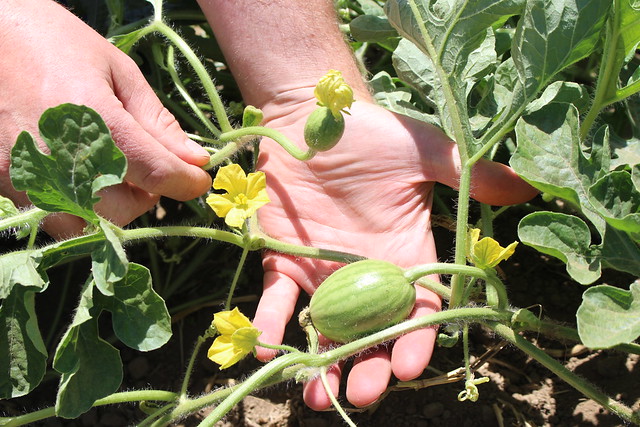From the Fields - Thaddeus
At farmers markets as a child, the summer season was filled with Crimson Sweet Watermelons. They were the best tasting watermelon loaded with tons of black seeds, but their crisp flavor was divine. They were a hassle to move often weighing 15 to 20 pounds each. They were harvested into bins, loaded and unloaded one melon at a time by creating a melon chain and tossing them through three people from the bin into the van and then out of the van into the bin at the market stand. But they were SO good that samples of them would stop people in their tracks. Once customers would buy them, we often had to lug them to their vehicle.
Some plant breeders recognized an opportunity. What if we could make a seedless watermelon that was small – a personal-sized, pure heart watermelon that tasted great. With this notion, generations and generations of watermelon were grown, selected, hand pollinated to another and so on. The results are two parent plants both of which produce seeds that if they were planted produce a melon identical to the parent. Both of which do not have the full set of qualities desired for the mini red seedless watermelon we grow. However, when these two are crossed, they create a hybrid seed (F1), which contains the genetics required to grow small, seedless watermelons.
The process used to create this seed is traditional plant breeding. They are not Genetically Modified Organisms. These watermelons were created with the same type of plant breeding that had been used long before GMO technology existed. GMO seeds are created when a piece of DNA from one organism is teased into the DNA of another organism using techniques that would never happen naturally. Hybrid plants are created when plants are selected for specific traits generation after generation creating two parent plants that have very specific traits. Those two plants are grown and pollinated with each other. In the case of watermelons, this pollination is done by hand. The seeds created are then planted into production fields, yielding the F1 generation of fruit that we grow, harvest and sell.
You can imagine the amount of time and effort it must have taken to breed a plant that does not create offspring. This is how capitalism works. If a demand for a product is large enough, it will be created. This watermelon’s inability to procreate due to is lack of seeds is the very trait that has caused its cultivation to exponentially expand and now this cultivar is thriving and more watermelons are being produced than ever before – ah, the irony.
August 17, 2015
Seedless Watermelons (non GMO!)
Seedless Watermelons (non GMO!)
2015-08-17T08:42:00-07:00
Farm Fresh To You
Subscribe to:
Post Comments
(
Atom
)
